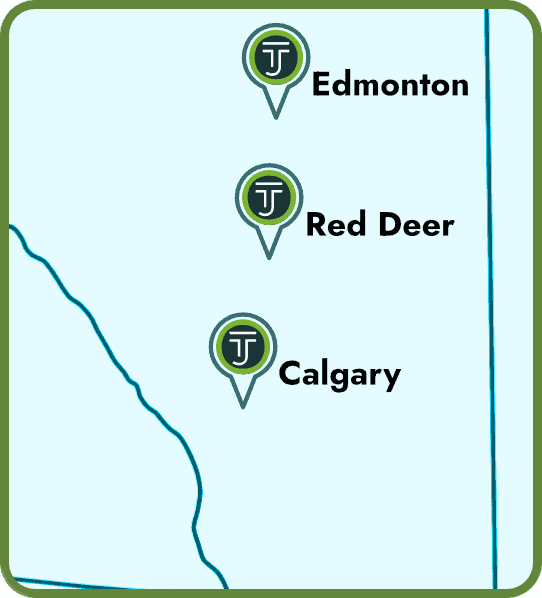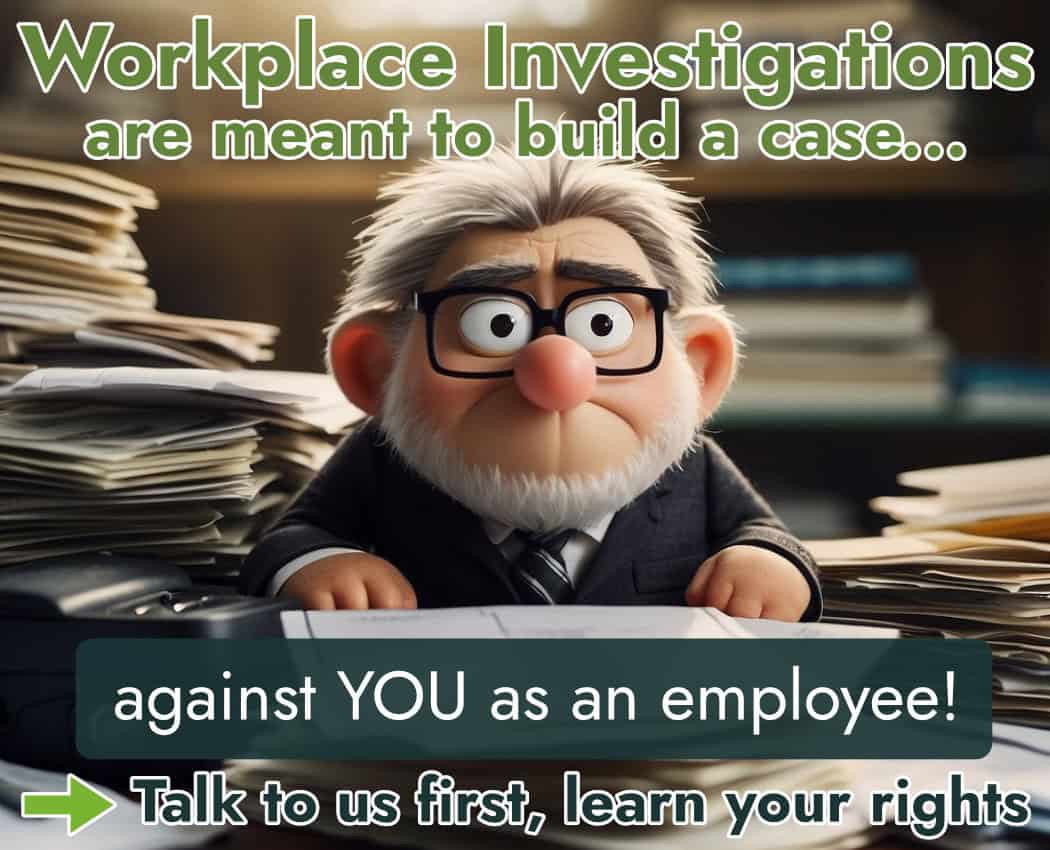
Workplace bullying in Alberta, considered a severe infraction under the Occupational Health and Safety Act, incorporates actions intended to intimidate, offend, degrade, or hurt employees. The law obliges employers to maintain a safe, harassment-free work environment, with procedures established to swiftly address complaints. Workers share in this responsibility, discouraging and reporting abusive behaviors. Regular hazard assessments help to identify and mitigate risks, supported by thorough employee training and prevention plans. Legal rights include protection from discrimination, a secure work setting, and incident investigation. Develop a deeper understanding of these elements to combat this serious issue effectively.
Key Takeaways
- Workplace harassment and violence, including bullying, are serious offenses under Alberta’s Occupational Health and Safety Act.
- Employers are legally obligated to ensure a harassment-free work environment, with supervisors addressing complaints promptly.
- A hazard assessment and prevention plan are required for identifying and mitigating risks of workplace bullying and ensuring legal compliance.
- Comprehensive training on workplace bullying, mandated by Alberta’s laws, is crucial for promoting awareness and empowering employees.
- Employees have legal rights under the Alberta Human Rights Act and Occupational Health and Safety Act, including protection against discrimination and the right to a safe working environment.
Understanding Workplace Harassment
Workplace harassment, a prevalent concern in Alberta, is defined as any objectionable conduct intended to intimidate, offend, degrade, or humiliate an employee. It includes various forms like physical, verbal, psychological, and sexual behaviours that can have a notable impact on an individual’s work performance, mental health, and overall well-being. This behaviour can originate from anyone in the workplace, including supervisors, co-workers, clients, or even suppliers.
The Occupational Health and Safety Act (OHSA) in Alberta distinctly defines and recognizes workplace harassment as a serious offense. It is essential to note that not every unpleasant interaction or disagreement at work constitutes harassment. The law excludes reasonable employer or supervisor conduct related to worker management and minor co-worker disagreements if resolved.
Preventing workplace harassment is a legal obligation for employers in Alberta, necessitating the development and implementation of well-defined prevention plans. These plans should clearly communicate the expectations regarding acceptable and respectful behavior at work, and must establish procedures for handling and reporting incidents of harassment. Regular training to employees, emphasizing the recognition and reporting of harassment, is an important aspect of these prevention plans.
Defining Workplace Violence
In addition to harassment, another detrimental issue that plagues workplaces is violence, a serious concern that demands an equally thorough approach. Workplace violence is a broad category, encompassing a variety of actions that can result in physical or psychological harm to employees. It can manifest in various ways, each equally damaging and disruptive to the overall work environment and individual well-being.
In Alberta, the OHSA includes a detailed definition of workplace violence. It outlines the following key aspects:
- Physical Aggression: This includes any form of physical attack, whether it results in injury or not. It could range from minor scuffles to serious assaults.
- Threats: Any explicit or implicit expression of intent to inflict harm constitutes violence. This includes verbal threats, intimidating behaviour, or written threats.
- Domestic and Sexual Violence: These forms of violence become workplace issues if they occur at or are brought into the workplace, affecting an employee’s safety and performance.
Understanding these definitions is central to recognizing violence in the workplace and taking the necessary steps to address it.
Obligations of Work Site Parties
Addressing workplace harassment and violence is a shared responsibility, with specific duties falling on employers, supervisors, and workers alike. Under Alberta’s OHSA, employers are primarily responsible for ensuring a harassment-free work environment. This includes establishing appropriate policies and procedures, providing necessary training for employees and supervisors, and promptly addressing any instances of bullying or harassment that occur.
Supervisors, on the other hand, must take a proactive role in protecting workers under their supervision. This includes promptly addressing any complaints of harassment or bullying, ensuring workers are aware of their rights and remedies, and taking immediate corrective action when necessary.
Workers also have an important role to play in maintaining a harassment-free environment. They are expected to refrain from causing or participating in any form of harassment or violence. Additionally, they have a responsibility to bring such issues to the attention of their supervisors or other relevant authorities. Failure to fulfill these obligations can lead to disciplinary action, including termination.
Conducting Hazard Assessment
Conducting a thorough hazard assessment is a critical step in identifying and mitigating the risks of workplace harassment and violence. This assessment process involves recognizing the potential hazards that could lead to instances of bullying or harassment and determining the necessary steps to eliminate or control these risks.
The process includes:
- Identifying potential sources of harassment or violence. This could be from individuals, certain work practices or even organizational culture.
- Evaluating the risk associated with each identified source. This involves understanding the likelihood of a situation leading to harassment or violence and the potential severity of such incidents.
- Implementing appropriate measures to control identified risks. This could include changes in workplace policies, training programs or even disciplinary actions.
It is important to bear in mind that the hazard assessment process is not a one-time event. It should be an ongoing process with periodic reviews and updates as necessary. This ensures that the assessment remains current and effective in preventing workplace bullying and harassment. Involving employees in this process not only increases their awareness about workplace bullying but also fosters a culture of safety and respect.
Developing Prevention Plans
Creating robust prevention plans is an essential strategy for employers in Alberta to address and mitigate workplace harassment and violence effectively. These plans should be thorough, outlining clear policies and procedures that identify, manage, and prevent the occurrence of bullying and harassment in the workplace.
Policies should set expectations for workplace behaviour, emphasizing zero tolerance for harassment or violence. They should explicitly state the consequences for engaging in such behaviour, thereby deterring potential offenders. These policies should also incorporate provisions from Alberta’s OHSA and the Human Rights Act to guarantee legal compliance.
Procedures, on the other hand, should provide a systematic approach to handling any instances of harassment or violence. This includes steps for reporting, investigating, and resolving complaints, as well as measures to protect complainants from retaliation.
Furthermore, prevention plans should be regularly reviewed and updated. This ensures that they remain effective and relevant, taking into account changes in the workforce, workplace culture, and legal landscape. Involvement and feedback from employees in this process are critical for creating an environment that not only discourages bullying and harassment but also fosters respect and inclusivity.
Mandatory Worker Training
In the quest to curb workplace harassment and violence, Alberta’s OHSA necessitates employers to provide comprehensive training for all workers. This mandatory training serves as a vital step in guaranteeing a safe and respectful work environment.
The training should encompass several elements:
- An understanding of what constitutes workplace harassment and violence as defined by Alberta’s OHSA.
- Techniques for recognizing signs of potential violence or harassment in the workplace.
- Procedures for reporting incidents of harassment or violence.
Mandatory worker training promotes awareness and empowers employees with knowledge that can aid in the prevention of bullying and harassment. It is essential that all workers, irrespective of their position or seniority, undergo this training to foster a unified stance against workplace bullying. Additionally, refresher training sessions should be conducted regularly to ensure the information remains fresh and top-of-mind.
Investigating and Reporting Incidents
When incidents of workplace harassment or violence occur, prompt and thorough investigation is an essential responsibility of employers under Alberta’s OHSA. It is crucial to establish a clear and effective process for reporting such incidents, facilitating open communication between all parties involved.
Investigations should be conducted impartially and confidentially to protect the identities of those involved. The objective of the investigation is not only to determine the facts of the incident but also to identify any systemic issues that may have contributed to the occurrence. If wrongdoing is established, appropriate corrective action should be taken promptly. This could range from mediation and conflict resolution to disciplinary measures, up to and including termination of employment.
Employers are also required to document all incidents and investigations. These reports must be maintained for a minimum of two years and made available to occupational health and safety officers upon request. The purpose of this documentation is to maintain a record of the incident and the steps taken in response, as well as to identify patterns or trends that could indicate a broader issue within the workplace.
Legal Rights Against Bullying
Employees subjected to bullying in Alberta have certain legal protections afforded to them under the Alberta Human Rights Act and the OHSA. These laws are crafted to guarantee a safe and respectful working environment for all employees, free from any form of harassment or bullying.
Under the Alberta Human Rights Act, employees are protected against discrimination on various grounds, including race, national or ethnic origin, colour, religion, age, sex, sexual orientation, marital status, family status, disability, and conviction for an offence for which a pardon has been granted.
The OHSA stipulates that employers must take reasonable steps to safeguard employees from workplace violence, including bullying. This includes developing and implementing policies and procedures, providing training, and promptly investigating any reported incidents.
In summary, the legal rights against bullying in Alberta include:
- Protection against discrimination based on various grounds
- Right to a safe working environment free from violence and harassment
- Right to have incidents of bullying investigated and addressed by the employer
If these rights are violated, employees can file a complaint with the Alberta Human Rights Commission or the Occupational Health and Safety Department.
Frequently Asked Questions
What Are the Signs of Potential Workplace Bullying to Look Out For?
Potential signs of workplace bullying include persistent negative comments, unjust criticism, exclusion, excessive workload, spreading rumours, and personal attacks. These behaviours often cause stress, anxiety, and decreased productivity in the targeted individuals.
How Does Workplace Bullying Impact the Overall Productivity of a Business?
Workplace bullying negatively impacts business productivity by decreasing morale, increasing employee turnover, and causing higher rates of absenteeism. It also leads to lower job satisfaction, reducing overall efficiency and potentially affecting a company’s reputation.
Are There Any Specific Industries More Prone to Instances of Workplace Bullying?
While instances of workplace bullying can occur across various industries, studies suggest higher prevalence in healthcare, education, public administration, and hospitality sectors due to their high-stress environments and hierarchical organizational structures.
What Steps Can Bystanders Take if They Witness Bullying at the Workplace?
Bystanders witnessing workplace bullying can actively support the victim by providing validation, documenting incidents, offering assistance in reporting, and standing up against the behaviour if it’s safe to do so, thereby promoting a safer environment.
Can the Victim of Workplace Bullying Seek Legal Action Outside of the Company?
Yes, victims of workplace bullying in Alberta can seek legal action outside of the company. They may file a complaint with Alberta’s Occupational Health and Safety or the Alberta Human Rights Commission or consult a lawyer.
Conclusion
To summarize, understanding and addressing workplace bullying is crucial for a healthy work environment.
It is essential for all parties, including employers, supervisors, and employees, to recognize their roles and obligations.
With effective hazard assessments, prevention plans, and training, incidents can be reduced.
Additionally, robust investigation and reporting systems, along with adherence to the Alberta Human Rights Act, can guarantee the protection of victims and accountability of perpetrators, fostering a productive and harmonious workplace.
References
Occupational Health and Safety Act, SA 2020, c O-2.2
https://www.canlii.org/en/ab/laws/stat/sa-2020-c-o-2.2/217173/sa-2020-c-o-2.2.html
Alberta Human Rights Act, RSA 2000, c A-25.5
https://www.canlii.org/en/ab/laws/stat/rsa-2000-c-a-25.5/212863/rsa-2000-c-a-25.5.html
Alberta Human Rights Commission, “Making a Complaint“, online: <https://albertahumanrights.ab.ca/complaints/making-a-complaint/>.
Government of Alberta, “OHS concerns and incidents“, online: <https://www.alberta.ca/ohs-complaints-incidents>.

We currently have three offices across Alberta — Edmonton, Calgary, and Red Deer. We serve the entire province of Alberta (and BC). We also have the infrastructure to work with any of our clients virtually — even the furthest regions of Alberta.
Call 1 (844) 224-0222 (toll free) to get routed to the best office for you or contact us online for general inquiries.
We also have a dedicated intake form to help you get the ball rolling. Our intake team will review your specific case and advise you on the next steps to take as well as what to expect moving forward.
Our offices are generally open 8:30 a.m.—4:30 p.m., Mon—Fri.


Illya Shcherba
WORKPLACE LAWYER
Illya is genuinely committed to a client-centred approach in his practice of law. This commitment comes from Illya’s ability to be empathetic towards others. Illya understands that providing good quality, strategic advice comes from listening to others and understanding their needs and wants.
PRIVACY NOTICE: Any information you provide to our office — whether your personal information or employment/employer details — will be treated as strictly confidential and will not be disclosed to your employer or to any other third party. So, please be reassured that you can talk openly to our capable Intake Paralegals worry free. Fill out an Online Inquiry or call us now, your information will be in safe and helping hands.
The Legal Review Process by Taylor Janis Workplace Law
- Taylor Janis strives for high-quality, legally verified content.
- Content is meticulously researched and reviewed by our legal writers/proofers.
- Details are sourced from trusted legal sources like the Employment Standards Code.
- Each article is edited for accuracy, clarity, and relevance.
- If you find any incorrect information or discrepancies in legal facts, we kindly ask that you contact us with a correction to ensure accuracy.


